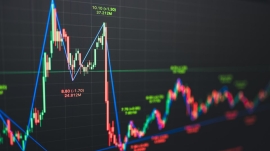La asignación de activos es el concepto más importante en el mundo de las inversiones. Hay muchos estudios que confirman esto, en los cuales se muestra que la asignación de activos representa más del 90% del rendimiento de las inversiones. En pocas palab ...
Your best ally against inflation?
(Y no es necesariamente el oro) Hace poco mas de 50 años, Richard Nixon, quien en ese entonces era el presidente de Estados Unidos, decidió cortar el vínculo que había entre el dólar y el oro. Esto convirtió al dólar americano en una moneda fiduciaria ...
What is the cost of a college education, and why should I start saving up?
Asesoría financiera gratuita con KNG Int. Advisors No dudes en comunicarte con nosotros para una asesoría gratuita, en la cual se te da un análisis completo y opciones personalizadas para el retiro u otros gastos fuertes, como costos universitarios ...
How much should I save for my retirement and why should I start saving now?
Que dicen los datos duros sobre como los mexicanos se preparan para el retiro... Hoy en día, en México hay 128.9 millones de habitantes, de los cuales 57.7 millones son económicamente activos, y de ellos 60% no cuentan con un plan de retiro. Es decir ...


